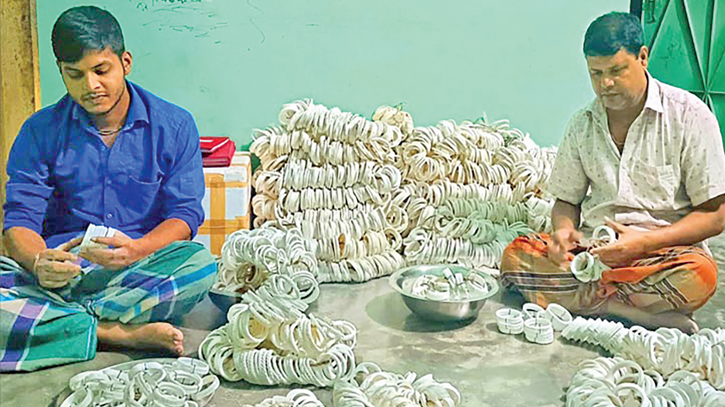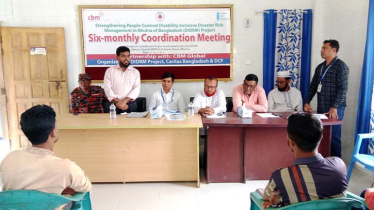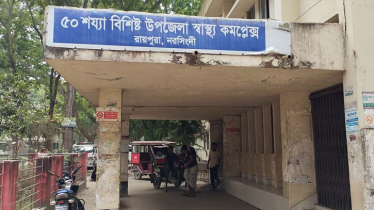
Photo : Messenger
The skilled artisans of Manikganj, who specialize in crafting conch shells, stand at a critical juncture, teetering on the edge of extinction due to a lack of crucial financial resources and patronage.
Beyond their aesthetic appeal as mere ornaments, conch shells hold significant cultural and spiritual value in the hands of Sanatan women. In the quaint village of Chota Baruria in Payla Union, Ghior Upazila, Manikganj, approximately fifty families continue this age-old tradition, showcasing their artistry by intricately shaping conch shells. However, these artisans express a pressing need for government support to revive and sustain this fading craft.
Delving into history, it is revealed that during the early 19th century, families like Sen, Dutta, and Kar in Chhota Baruria village initiated the handmade production of conch shells. Their ancestors acquired these invaluable skills from Shankhari Bazar and Chattogram, initially selling their creations within the local vicinity. Over time, the reputation of Yash became synonymous with their craft, leading to a burgeoning market for their intricately designed conch shells.
The serene atmosphere of the small Baruria village is harmonized by the rhythmic sounds of conch shells being meticulously crafted, creating a melodic ambiance across the conch fields. This labor-intensive process engages men, women, and children within households, as they cater to both wholesale and retail buyers, ensuring their livelihoods year-round.
Dola Roy, a retired teacher from Ghior, emphasizes that the conch craft has been an integral part of their cultural heritage for over a century. Various designs of conch shells are customarily ordered from this village for weddings, religious ceremonies, and festivals. Prahallad Sen, a skilled conch artist, details the intricate process involving sourcing conch shells from Sri Lanka and India, machine cutting, and then painstakingly handcrafting them into various shapes and designs. Each pair sells for prices ranging from Tk 300 to Tk 5,000.
However, artisans like Shakti Kar and Haripad Kar highlight the challenges they face due to dwindling local demand and the inability to compete with imported products. The struggle to preserve their traditional craft is evident, underscoring the urgent need for government support to overcome these hurdles.
Sopen Dutta, the proprietor of Gheor Loknath Shankh Shilpalaya, reminisces about a time when conch shells from this village were highly sought after by Sanatan religious communities in India and Europe. Despite gaining national recognition, the lack of financial resources hampers his ability to acquire modern equipment, making government sponsorship pivotal for the survival of their craft.
Deepa Sen, a housewife, sheds light on the multifaceted uses of conch powder generated during the crafting process, which finds demand among brides and teenagers for skincare purposes. She underscores the integral role of families in both crafting and design work, illustrating the holistic contribution of households to this industry.
Harunur Rashid, Chairman of Poila Union Parishad, venerates the more than a century-old tradition of the conch industry in the village. He strongly believes that with government patronage, the conch shells produced here could gain substantial recognition in foreign markets.
Aminul Islam, the Upazila Executive Officer (UNO), acknowledges the conch craft as one of Bengal's treasured folk arts. He pledges comprehensive support from the Upazila administration to preserve, develop, and establish an online market for the Gheor shell industry, ensuring its continuity and growth.
Messenger/Fameema








